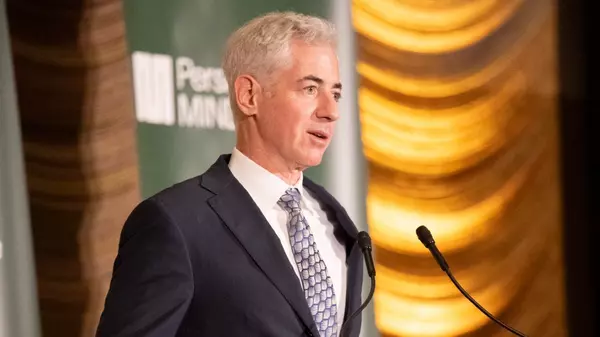Fed Readies a Rate Cut and Faces These Four Questions


Anna Moneymaker/Getty Images
The Federal Reserve is widely expected to cut interest rates by a quarter-percentage point at its meeting that ends Thursday. The bigger question is how many more cuts officials expect will be warranted to preserve a solid job market without reversing recent declines in inflation.
The Federal Reserve is widely expected to cut interest rates by a quarter-percentage point at its meeting that ends Thursday. The bigger question is how many more cuts officials expect will be warranted to preserve a solid job market without reversing recent declines in inflation.
Officials will be hard-pressed to offer any firm answers on that question because their reply will be some version of the following: It depends.
This week’s decision lacks the suspense of the last one, when markets weren’t sure how big the Fed’s rate cut would be. That means that Fed Chair Jerome Powell’s press conference at 2 p.m. Eastern time on Thursday will be the main event.
Powell is likely to try to stay out of the postelection spotlight by avoiding questions about hot-button policy issues. The Fed strives to be apolitical, and officials pushed back their meeting by one day to put more space between the interest-rate decision and the presidential election.
The Fed cut rates by a half-point at its meeting in September, the first cut in four years. At that meeting, 19 participants were about evenly divided over whether to cut interest rates one or two more times this year. Nine of them penciled in one additional cut or fewer this year, and 10 officials penciled in two cuts. The Fed will have one more meeting this year, in December.
Investors will be on alert Thursday for any signals about where the bar is to cut rates again in December. Another reduction at that meeting seems more likely than not but isn’t a slam dunk, said Richard Clarida, who was Fed vice chair from 2018 to early 2022. The outlook for 2025 remains especially wide open, he said.

JOSEPH PREZIOSO/AFP via Getty Images
Here is a look at four questions officials face that illustrate why the Fed’s ability to offer meaningful interest-rate guidance could be more limited:
First, does the election result lead to meaningful changes for economic demand or inflation that warrant a different policy path?
Officials won’t change their policy approach until they can see what President-elect Donald Trump does with proposed changes to taxes, tariffs, and immigration. But if Republicans also win control of both chambers of Congress, staff economists could begin to revise some of their underlying assumptions at the December meeting.
Transcripts from the Fed’s December 2016 policy meetings show officials and staff economists engaged in robust debates over how to model the possibility of tax cuts. Trump had just won the election with majorities in both chambers of Congress. At the time, the Fed was gradually raising interest rates from very low levels.
Second, have jitters about job-market deterioration been overstated? When the Fed cut rates in September, the unemployment rate had ticked up to 4.3% in July from 3.7% at the beginning of the year. There was also a slowdown in the pace of job growth. Some economists feared that the Fed might have held rates too high for too long, leading to unnecessary labor-market weakness. Those fears were amplified by a rule of thumb that says once unemployment starts to rise by a little bit, it typically rises by a lot more.
Since officials last met, those concerns have receded somewhat, but they haven’t been extinguished by any means. Job growth rebounded in September but was very soft in October, likely reflecting the effect of hurricanes and strikes. The unemployment rate fell to 4.1% in September and stayed at that level in October.
The lack of clarity about the economy from weather, strikes and the election will make it harder for officials to be explicit about their coming plans.
Third, where is inflation headed? Inflation based on the Fed’s preferred index has been slowing. The index rose 2.1% in September from a year earlier. A separate measure of so-called core inflation that strips out volatile food and energy prices was 2.7%.
Core inflation has declined meaningfully from where it was in 2023, which is why the Fed has felt comfortable beginning to cut interest rates. But some officials could agitate for a slower pace of cuts if inflation progress appears to stall and the economy is humming along.
Fourth, what is the right level for rates, anyway? Officials are trying to bring rates back to a more “normal” setting after two years of rapidly increasing borrowing costs to fight inflation. But they don’t know what constitutes a normal rate.
Before the 2008-09 financial crisis, many thought a normal or “neutral” level that neither spurs nor slows the economy might be around 4%. The benchmark federal-funds rate is currently in a range between 4.75% and 5%. But after the crisis and an extremely sluggish recovery, economists concluded that this normal or neutral level might have fallen to around 2%.
At a press conference in September, Powell said he didn’t think the U.S. would go back to quite such a low neutral rate. “We’re going to find out,” he said. “It feels to me that the neutral rate is probably significantly higher than it was back then.”
As the Fed moves rates lower, this question about the ultimate destination will become more urgent. If the economy is performing well, officials who think the neutral rate is higher might eventually want to slow down the pace of cuts to avoid overshooting neutral.
Categories
Recent Posts











"My job is to find and attract mastery-based agents to the office, protect the culture, and make sure everyone is happy! "
